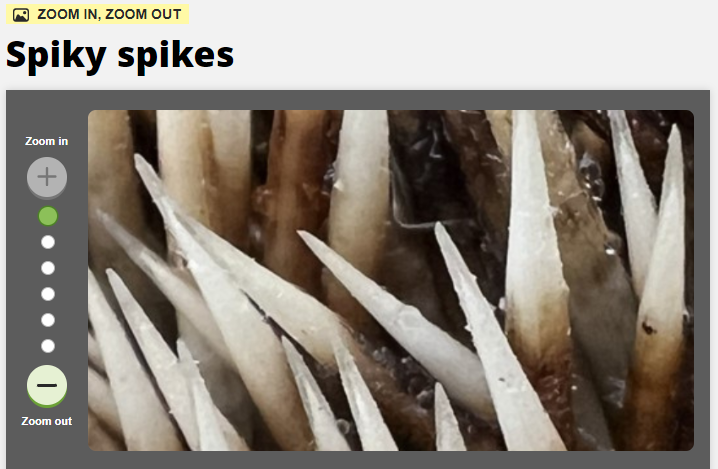Case study 1: Using Zoom In, Zoom Outs to capture children's attention
Teacher-researcher Jane Catto says, “I like to repeat the process, zooming back in, then out again, because we always notice more the second time.”

Teacher-researcher
Jane Catto
Setting
Jane teaches in a three-form entry infant school and has a wealth of Early Years experience. Her school is federated with a junior school on the same site and they share a SENCO and a resource provision to support children with speech and language needs. In the last few years, the federation has seen an increase in the proportion of children with SEND. As the subject leader, Jane's action plan is currently focusing on providing more inclusive approaches in science.
Identified need
Jane wanted to support all the children in her reception class with their science learning. To improve the inclusion of those children who spent lots of time within the provision base, she wanted to provide an environment where all children could focus on science and speak with confidence.
The Approach
Explorify’s Zoom In, Zoom Out activities provided a visual stimulus which Jane thought would engage the children and increase their focus and concentration. Jane capitalised on this by following the zooming out by repeating the zooming back in and out again. She followed the children’s interests, sometimes allowing them to choose an activity or press the zooming buttons on the big screen.

Key outcomes for children
Increased engagement
Increased participation in whole class discussion
Jane’s reflections
All of the children loved doing Zoom In, Zoom Out activities. The children who often spent time in the provision base were highly engaged and the activities could be accessed as a whole class. The positive atmosphere during these sessions helped children to regulate themselves as they waited for their turn to share their ideas.
I like to repeat the process, zooming back in, then out again, because it gives us all a chance to process and link the first close-up image to the final object. We always notice more the second time and children start to explain what they can see and why they think it is like that in each picture.
I could see that some children had gained a lot of confidence because they began to contribute to class discussions. They particularly liked being given the chance to choose another Zoom In, Zoom Out activity themselves. Some of their favourite activities focused on everyday objects, like Orange and tasty (a carrot), Sweet and shiny (a banana) and Yellow moves (a typical Early Years tricycle). Spiky spikes was great because we followed the links in the 'Take it further' and all the children maintained their concentration as we watched the suggested film about hedgehogs; they learnt about hedgehogs’ senses and the food they like to eat.
